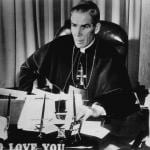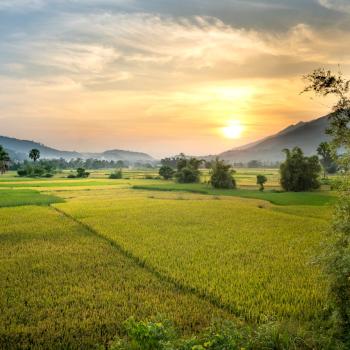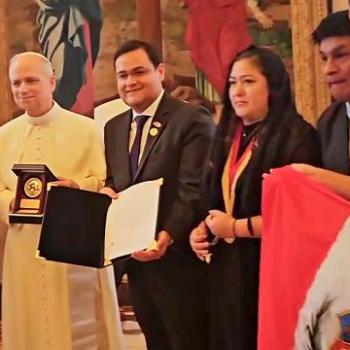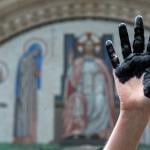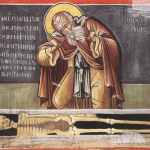I sat alone on a brown wooden bench at the open air Erawan Shrine in downtown Bangkok during the evening rush hour. The wheels of commuter trains above me screeched as the trains made a sharp turn on two elevated concrete railways. Thousands of men and women participating in the “Occupy Bangkok” protest blocked the adjacent roads. One of the protestors had checked my bag as I crossed the crowded protest line to reach the shrine from my nearby hotel. I saw stunning modern high-rises and luxurious shopping centers around the shrine. In the busyness of the hour, scores of men and women entered the shrine briefly. It appeared everyone who passed by the hectic intersection would make a mandatory stop regardless of age, gender, or dress. Each picked up an incense stick and slid a coin or bill in a box. After lighting the incense and placing it in front of the Buddha surrounded by yellow marigolds in the middle of the shrine, I watched each worshiper join his or her hands in prayer and bow toward the golden statue of Buddha. Up and down, back and forth, they prayed. Some remained standing while others knelt. Some visitors washed their hands and faces with water contained in a large decorative bowl.
On the side opposite to the shrine’s entrance women dancers sat wearing exotic vestments while making deliberate movements with their upper bodies and heads. Drums and two wooden marimbas marked the rhythm for the traditional dances. Visitors who made a higher financial contribution prayed in front of the traditionally dressed women, uniting their prayers to those of the dancers. I watched two worlds collide at the busy intersection of Sukhumvit Road. Progress and modernity met the ancient mystic tradition of the east. Not long after I visited, the shrine was bombed. Twenty people were killed and 125 were injured.
As I sat alone on the brown wooden bench at Erawan Shrine in downtown Bangkok I found myself for the first time in my life in a country where the Gospel of Jesus Christ was not the norm, and had never been. I was in a country where Jesus was unknown by the vast majority of the population, and where the culture traced its roots to a history very different from mine.
Pope Francis recently visited Thailand and addressed several gatherings of Catholics, including one at Saint Peter Parish in the Catholic village of Wat Roman a Tha Kham, a place I visited with the Filipino missionary Father Franklin Mirasol. The Pope reminded missionaries working in a country where Catholics are less than one percent of the population that, “the church does not grow by proselytizing, but by attraction.” Lamenting that most Thais consider Christianity a faith for foreigners and not themselves, he encouraged those gathered to find ways for the faith to have a “Thai face and flesh, which involves much more than making translations.” In other words, for the essential message of the Gospel to incorporate elements of the Thai culture. Throughout the centuries the Catholic Church been a genius at inculturation which has given rise to the various faces of the universal Church. Our faith of Semitic roots inculturated into Greek and Roman cultures, Slavic and Native American cultures, Ethiopian and Syriac cultures, among some. The Church manifests its universality best by gathering into one faith in Christ the many diverse cultures and faces of the globe. The morning I sat at the Erawan Shrine taught me that the Thai people were devout, respectful, and deeply aware of the transcendent. It provided me an opportunity for introspection and increased my desire to deepen my own relationship with Jesus Christ in whom all human desires are fulfilled.
Picture is mine, all rights reserved. Bangkok, 2013.



